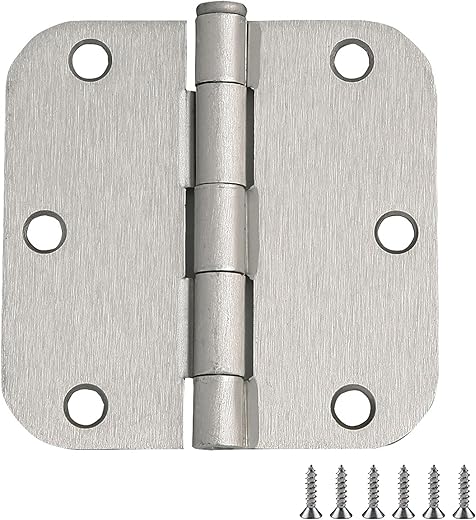







Understanding Door Hinges: The Unsung Heroes of Your Home
When you think about home improvement, door hinges often don’t come to mind. Yet, these small but mighty components play a crucial role in the functionality and aesthetics of your doors. Have you ever paused to consider how a simple hinge can affect the way your doors close, open, and even look? In this article, we will explore the various types of door hinges, their applications, and how to choose the right one for your needs.
The Anatomy of a Door Hinge
At first glance, a door hinge seems straightforward: two plates, a pin, and maybe a few screws. But delve deeper, and you’ll find that these components come together to perform a remarkable engineering feat. The two plates, known as leaves, are attached to the door and the door frame. The pin, which runs through the leaves, allows for smooth movement, letting your door swing open and shut with ease. It’s like the pivot point of a seesaw—without it, nothing would function properly.
Types of Door Hinges
Not all hinges are created equal. Just like a chef uses different tools for different recipes, you’ll find various types of hinges suited for specific needs:
1. Butt Hinges
Butt hinges are the most common type found in residential doors. They consist of two rectangular leaves that are mortised into the edge of the door and the door frame. This design helps distribute weight evenly, making them ideal for heavy doors. Think of them as the backbone of your door.
2. Continuous Hinges
Also known as piano hinges, continuous hinges run the entire length of the door. This design provides extra strength and stability, making them perfect for heavy-duty applications or doors that see frequent use. Imagine a sturdy bridge that can support heavy traffic—this is the role of continuous hinges.
3. Concealed Hinges
For a sleek and modern look, concealed hinges are the way to go. These hinges are hidden when the door is closed, providing a clean aesthetic. They are often used in cabinetry and contemporary home designs. It’s like having a magician perform a trick—everything appears seamless until you know where to look.
4. Spring Hinges
Spring hinges are designed to automatically return the door to a closed position after it’s been opened. Perfect for high-traffic areas or exterior doors, these hinges can add convenience and security to your home. Think of them as the helpful friend who always nudges the door closed after you walk through.
Choosing the Right Hinge
Selecting the right hinge may seem like a minor detail, but it can significantly impact functionality and style. Here are some factors to consider:
Weight and Size of the Door
A heavy door requires a sturdy hinge. Consider the weight and dimensions before making your choice. For lighter interior doors, standard butt hinges will suffice, but for heavy exterior doors, opt for continuous or heavy-duty hinges.
Material Matters
Hinges come in various materials such as brass, stainless steel, and plastic. Stainless steel is favored for its durability and resistance to rust, making it ideal for exterior applications. Brass, while aesthetically pleasing, may not hold up as well in harsh weather conditions.
Style and Finish
Don’t forget about aesthetics! The finish of your hinges should complement your door and home decor. Whether you prefer a polished chrome, matte black, or antique brass, there’s a hinge to match your style.
Installation Tips
Once you’ve chosen the right hinge, it’s time for installation. Although it can be a straightforward DIY project, following these steps can ensure success:
1. **Remove the Old Hinge**: Unscrew the old hinge using a screwdriver. If it’s stuck, a gentle tap with a hammer may help loosen it.
2. **Prepare the New Hinge**: Align the new hinge with the pre-drilled holes. If the holes don’t match up, you may need to drill new ones.
3. **Secure the Hinge**: Use screws to attach the hinge to both the door and the frame. Make sure it’s tightly secured to prevent any wobbling.
4. **Test the Door**: After installation, gently open and close the door to ensure it swings smoothly.
Conclusion
In the grand scheme of home improvement, door hinges may seem trivial, but they are vital for both function and style. By understanding the types of hinges available, their proper applications, and installation tips, you can enhance the overall performance and appearance of your doors. So, the next time you walk through a door, take a moment to appreciate the humble hinge that makes it all possible.
FAQs
1. How often should I replace my door hinges?
Generally, if you notice squeaking, rust, or difficulty in opening and closing the door, it might be time to replace your hinges. Regular maintenance can prolong their lifespan.
2. Can I paint my door hinges?
Yes, you can paint door hinges! However, it’s essential to use a paint suitable for metal surfaces and to ensure that the hinges are clean and free of grease before applying paint.
3. What should I do if my door squeaks?
A squeaky door is often a sign that it needs lubrication. Apply a few drops of lubricant, like WD-40 or a silicone spray, to the hinges to eliminate the noise.
